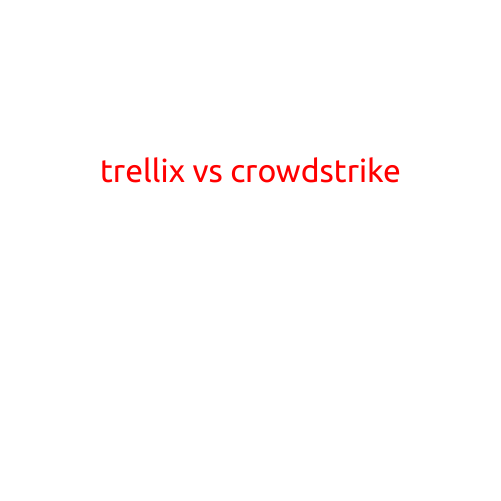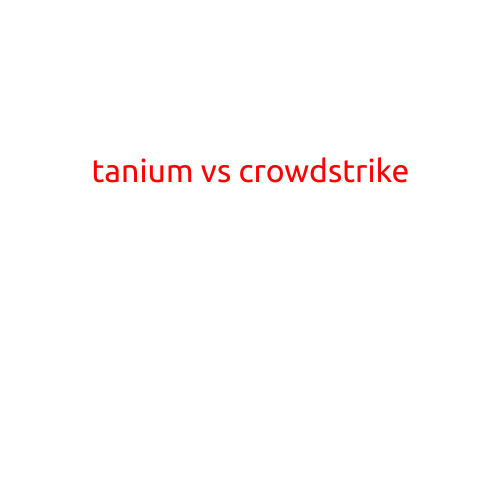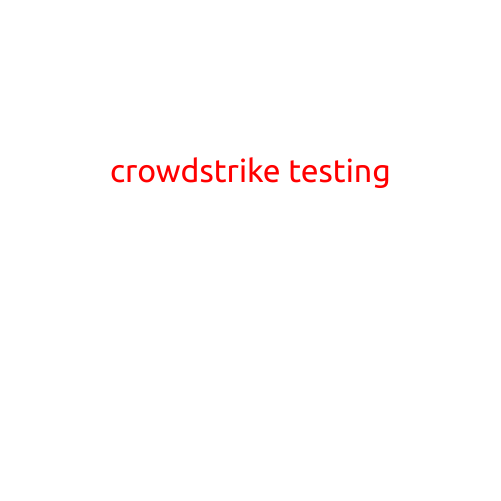
Threat Intelligence at CrowdStrike: A Comprehensive Approach to Cybersecurity
In today’s digital landscape, cybersecurity threats are more numerous and sophisticated than ever before. As a result, organizations must have a robust and proactive approach to detecting and responding to these threats. One critical component of this approach is threat intelligence, which involves collecting, analyzing, and disseminating information about potential threats to organizations. In this article, we’ll explore how CrowdStrike, a leading cybersecurity company, leverages threat intelligence to protect its customers from cyber threats.
What is Threat Intelligence?
Threat intelligence refers to the process of collecting, analyzing, and disseminating information about potential threats to an organization. This includes gathering data on malware, vulnerability exploits, phishing campaigns, and other types of cyber attacks. Threat intelligence provides context and insights into these threats, enabling organizations to make informed decisions about how to mitigate and respond to them.
CrowdStrike’s Approach to Threat Intelligence
CrowdStrike takes a comprehensive and proactive approach to threat intelligence. The company’s Falcon platform, which is used by millions of users worldwide, collects and analyzes vast amounts of data on potential threats. This data is then integrated with human analysts and machine learning algorithms to identify patterns and anomalies that may indicate a threat.
CrowdStrike’s threat intelligence capabilities include:
- Indicators of Compromise (IOCs): CrowdStrike collects and analyzes IOCs, which are specific pieces of data that indicate a potential threat, such as IP addresses, domains, and file hashes.
- Threat Actor Analysis: CrowdStrike’s analysts track and analyze threats from specific threat actors, such as nation-state actors, criminal organizations, and hacktivists.
- Advanced Persistent Threat (APT) Detection: CrowdStrike’s platform is equipped with advanced APT detection capabilities, which enable it to detect and respond to sophisticated threats.
- Real-time Threat Detection: CrowdStrike’s platform provides real-time threat detection capabilities, enabling organizations to respond quickly and effectively to potential threats.
Benefits of CrowdStrike’s Threat Intelligence
By leveraging CrowdStrike’s threat intelligence capabilities, organizations can enjoy a range of benefits, including:
- Improved Threat Detection: CrowdStrike’s threat intelligence capabilities enable organizations to detect threats more quickly and accurately.
- Enhanced Incident Response: With CrowdStrike’s threat intelligence, organizations can respond more effectively to incidents, reducing the impact of a breach.
- Reduced False Positives: CrowdStrike’s threat intelligence capabilities help reduce the number of false positive alerts, freeing up security teams to focus on genuine threats.
- Increased Efficiency: By automating much of the threat intelligence process, CrowdStrike’s platform enables security teams to be more efficient and effective.
Conclusion
In today’s dynamic and ever-changing cybersecurity landscape, threat intelligence is a critical component of any effective cybersecurity strategy. CrowdStrike’s comprehensive approach to threat intelligence provides organizations with the insights and tools they need to detect and respond to potential threats. By leveraging CrowdStrike’s threat intelligence capabilities, organizations can improve threat detection, enhance incident response, reduce false positives, and increase efficiency.





